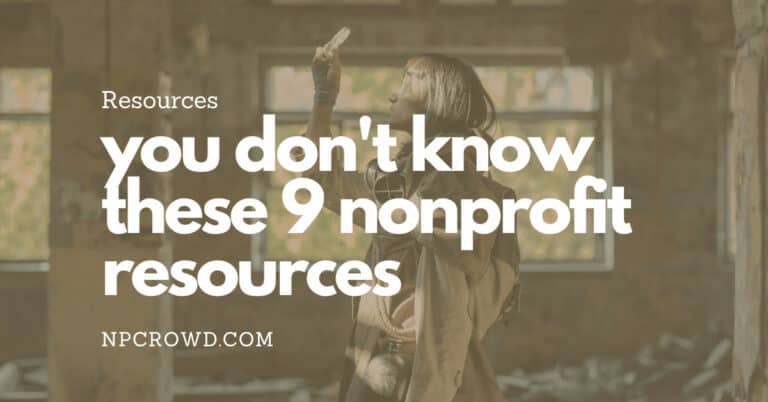The Hidden Costs of Running a Nonprofit: Insurance and Beyond
Disclaimer: This post may contain affiliate links. These links, if used and purchases made, we may earn a small commission. These affiliate programs do not impact the recommendations we make or the resources we refer you to. Our focus is on providing you the best resources for your nonprofit journey.
Did you know that the hidden costs of running a nonprofit can extend far beyond operational expenses? One often overlooked aspect is the significant expenses associated with insurance. Many nonprofit organizations underestimate the impact that insurance costs can have on their financial sustainability and ability to fulfill their missions.In this article, we will delve into the hidden costs of insurance for nonprofits and explore the various challenges they face. From understanding the importance of insurance in protecting nonprofit missions to evaluating insurance coverage options and navigating insurance premiums, we will provide valuable insights and practical tips to help nonprofits make informed decisions.
Key Takeaways:
- Running a nonprofit comes with hidden costs, including insurance expenses.
- Insurance is crucial in protecting nonprofit organizations and their missions.
- Nonprofits have unique insurance needs, and there are various coverage options available.
- Understanding the factors that influence insurance premiums is essential.
- Real-life case studies highlight the impact of insurance claims on nonprofits.
Understanding Insurance for Nonprofits
Insurance plays a critical role in protecting nonprofit organizations and their missions. Nonprofits face a variety of liability issues that can arise from their activities, operations, and interactions with stakeholders. These liability issues have the potential to lead to costly lawsuits, damage to reputation, and financial setbacks. It is essential for nonprofit leaders and board members to understand the importance of insurance in mitigating these risks.
The Importance of Insurance in Protecting Nonprofit Missions
Nonprofits exist to serve their missions and make a positive impact on their communities. However, unforeseen events and accidents can disrupt the ability to fulfill these missions. Insurance coverage is crucial because it provides the necessary financial and legal support to protect nonprofits in the event of unexpected incidents. It safeguards the organization’s assets, helps cover legal expenses, and ensures continuity in delivering services to those in need. By investing in comprehensive insurance coverage, nonprofits demonstrate a commitment to their missions and safeguard their ability to make a difference.
Common Liability Issues Faced by Nonprofits
Nonprofits face liability issues unique to their sector. These issues can arise from various activities, including events, programs, volunteer activities, and fundraising efforts. Liability risks may include accidents resulting in injuries, property damage, professional errors, and other forms of negligence. Nonprofits also need to protect themselves from claims related to sexual misconduct, discrimination, harassment, or wrongful termination. Understanding and addressing these liability issues through appropriate insurance coverage is essential for nonprofit organizations to protect their financial stability and preserve their missions.
Real-Life Claims: What Can Go Wrong?
Real-life examples illustrate the potential risks and consequences that nonprofits may face without adequate insurance coverage. Consider a scenario where a nonprofit organizes a community event, and a participant slips and falls, incurring significant injuries. Without appropriate general liability insurance, the nonprofit may face a costly lawsuit, potentially leading to financial strain and damage to its reputation. Another example could involve a nonprofit professional providing incorrect advice or services that result in financial losses for a client. Professional liability insurance would be crucial in this case to cover legal defense costs and potential damages. These examples highlight the importance of insurance in protecting nonprofits from unexpected incidents that can jeopardize their missions and resources.
| Insurance Claims Examples for Nonprofits |
|---|
| Scenario 1: Slip and Fall Incident at Community Event |
| A participant at a nonprofit’s community event slips and falls, resulting in injuries and subsequent medical expenses. The injured individual brings a lawsuit against the nonprofit, claiming negligence in maintaining a safe environment. |
| Scenario 2: Professional Error with Financial Consequences |
| A nonprofit professional provides incorrect financial advice, resulting in substantial financial losses for a client. The client files a lawsuit against the nonprofit for professional errors and negligence. |
| Scenario 3: Damage to Third-Party Property |
| During a nonprofit’s fundraising event, a volunteer accidentally damages a neighboring property. The owner of the damaged property sues the nonprofit for the cost of repairs. |
These examples demonstrate the potential risks and financial impact that nonprofits may face without proper insurance coverage. By understanding the insurance needs specific to their organization and investing in appropriate coverage, nonprofits can protect their missions, finances, and reputation from unexpected events and claims.
Exploring Nonprofit Insurance Coverage Options
Nonprofit organizations have unique insurance needs, and there are various coverage options available to address these needs. It is essential for nonprofits to understand and evaluate these options to make informed decisions regarding their insurance needs. By choosing the right policies, nonprofits can protect their missions and assets from potential risks and liabilities.
Here are some common types of insurance coverage options specifically designed for nonprofits:
- General Liability Coverage: This coverage protects nonprofits from third-party claims for bodily injury, property damage, and personal injury. It provides financial protection in the event of accidents, negligence, or other liability-related issues.
- Property Coverage: Nonprofits can obtain property insurance to protect their physical assets, such as buildings, equipment, and inventory, from risks such as fire, theft, or natural disasters.
- Directors and Officers Liability Insurance: This coverage protects nonprofit directors and officers from personal liability for their decisions and actions. It provides financial protection in the event of lawsuits alleging mismanagement, negligence, or breach of fiduciary duty.
- Professional Liability Insurance: Also known as errors and omissions insurance, professional liability coverage protects nonprofits against claims arising from professional services, advice, or negligence. It is particularly important for nonprofits that provide professional services, such as healthcare or counseling.
- Workers’ Compensation Insurance: Nonprofits with employees should consider having workers’ compensation insurance to provide coverage for medical expenses and lost wages in case of work-related injuries or illnesses.
- Cyber Insurance: With the increasing risk of cyber threats, nonprofits can protect themselves from data breaches, hacking, and other cyber-related incidents by obtaining cyber insurance. This coverage helps cover the costs of notification, credit monitoring, and legal expenses associated with a cyber attack.
Nonprofits should assess their specific risks and insurance needs to determine which coverage options are most appropriate for them. Consulting with an experienced insurance agent or broker who specializes in nonprofit insurance can also provide valuable guidance in selecting the right policies for comprehensive protection.

Insurance Costs: Navigating Premiums and Coverage Limits
Insurance costs can be a significant expense for nonprofit organizations. It is essential for nonprofits to understand the factors that influence insurance premiums in order to effectively navigate these costs. Insurers take into account several key factors when determining insurance premiums for nonprofits.
Factors Influencing Insurance Costs for Nonprofits
Several factors can affect the insurance premiums charged to nonprofit organizations. These include:
- The type of activities and services provided by the nonprofit
- The organization’s claims history, including any previous insurance claims made
- The size of the organization and its annual revenue
- The location of the organization and the associated risk factors
- The number of employees and volunteers
Insurance providers assess these factors to determine the level of risk associated with insuring a nonprofit organization. The higher the perceived risk, the higher the insurance premiums are likely to be.
Evaluating the True Cost of Insurance Premiums
When evaluating insurance premiums, nonprofits need to consider more than just the dollar amount. It is crucial to assess the coverage limits, deductibles, and potential claims scenarios. While lower premiums may seem attractive initially, they may come with higher deductibles or lower coverage limits, leaving the organization vulnerable in the event of a claim.
Nonprofits should carefully review their insurance policies and consider scenarios where they may need to make a claim. By understanding the potential costs and coverage limitations, nonprofits can make informed decisions about the true cost of insurance premiums and ensure they have adequate protection for their organization.
It is also beneficial for nonprofits to work with experienced insurance brokers or agents who specialize in nonprofit insurance. These professionals can help nonprofits navigate the complexities of insurance policies, assess coverage needs, and find the most cost-effective solutions.
Having a clear understanding of the factors affecting insurance premiums and evaluating the true cost of insurance coverage allows nonprofits to make informed decisions about their insurance needs. By effectively navigating insurance costs, nonprofits can protect their missions, assets, and the valuable work they do in their communities.
Case Studies: Nonprofits and the Impact of Insurance Claims
Real-life case studies can provide valuable insights into the impact of insurance claims on nonprofit organizations. Let’s examine specific cases where nonprofits faced insurance claims and the subsequent consequences they experienced. These case studies will highlight the financial, operational, and reputational implications that insurance claims can have on nonprofits.
To illustrate the real-world impact, let’s take a look at the following case:
Case Study – XYZ Community Center:
The XYZ Community Center, a nonprofit organization dedicated to providing educational and recreational programs for underprivileged youth, experienced a devastating fire due to an electrical malfunction. The center suffered extensive property damage, including the destruction of important equipment and resources.
The impact of the insurance claim was significant for XYZ Community Center:
- The financial burden of rebuilding and replacing damaged property strained the center’s limited resources, affecting its ability to provide essential services.
- The operational disruptions caused by the fire led to program cancellations and the loss of community support, jeopardizing the center’s long-term sustainability.
- The negative publicity surrounding the incident damaged the center’s reputation, resulting in decreased public trust and donor uncertainty.
By studying this case and other similar instances, nonprofit leaders can gain a deeper understanding of the potential risks they face and recognize the importance of comprehensive insurance coverage. It is crucial for nonprofits to assess their unique risks, evaluate their insurance needs, and ensure adequate coverage to protect their missions, assets, and stakeholders.

| Impact Areas | XYZ Community Center Case |
|---|---|
| Financial | Strained resources, difficulty funding essential programs |
| Operational | Program cancellations, loss of public support |
| Reputational | Negative publicity, decreased public trust and donor uncertainty |
Risks and Legal Considerations in Nonprofit Operations
Nonprofit organizations face various risks and legal considerations in their day-to-day operations. From compliance with regulations to the potential for lawsuits, these organizations must prioritize proper risk management and insurance strategies. In this section, we will explore the potential legal challenges that nonprofits may encounter and discuss how insurance can provide defense and protection. We will also delve into the crucial role that directors and officers insurance plays in safeguarding nonprofit leaders from personal liability risks.
Potential Legal Challenges and Insurance Defense
Nonprofits operate in a complex legal landscape, making them susceptible to a range of legal challenges. These challenges can arise from employment-related issues, contract disputes, intellectual property infringements, or even personal injury claims. To navigate these legal challenges effectively, nonprofits need robust insurance coverage that includes general liability insurance, professional liability insurance, and other specialized policies tailored to their specific risks.
Insurance plays a pivotal role in mitigating the financial impact of legal challenges, providing a defense against claims and covering legal defense costs. By having appropriate insurance coverage in place, nonprofits can focus on their mission and operations, knowing they have the necessary financial protection to handle potential legal liabilities.
The Role of Directors and Officers Insurance
Directors and officers insurance, commonly known as D&O insurance, is crucial for nonprofit organizations to protect their board members and officers from personal liability risks. Nonprofit leaders often make critical decisions that impact the organization’s operations and financial well-being. If these decisions result in allegations of mismanagement, negligence, or breach of fiduciary duty, directors and officers may face personal lawsuits.
D&O insurance provides coverage for legal fees, settlements, and judgments in such cases, ensuring that board members and officers can perform their duties without the fear of personal financial ruin. It serves as a safeguard for the individuals who contribute their time and expertise to advance the nonprofit’s mission, enabling them to make decisions and take calculated risks in pursuit of organizational goals.
Proactive Measures to Mitigate Insurance Risks
Nonprofits understand the significance of managing insurance risks effectively to protect their missions and ensure long-term sustainability. By implementing proactive risk management strategies, organizations can minimize potential insurance claims and create a culture of risk awareness within their operations.
Implementing Effective Risk Management Strategies
One essential step in mitigating insurance risks is conducting thorough risk assessments. Nonprofits should identify and evaluate potential risks associated with their activities, operations, and external factors. By understanding the specific risks they face, organizations can develop tailored risk management policies and procedures to address these challenges.
Training staff and volunteers on risk awareness is another vital aspect of risk management. By educating individuals about potential risks and the appropriate actions to take, nonprofits can empower their team members to make informed decisions that minimize risk exposure.
Furthermore, fostering a culture of risk management requires ongoing monitoring and improvement. Regular evaluations of risk management protocols ensure that they remain effective and relevant. Nonprofits should establish mechanisms for reporting and addressing incidents promptly to prevent future occurrences.

The Benefits of Regular Insurance Review and Assessment
Regular insurance reviews and assessments are crucial to ensure that nonprofit organizations have adequate coverage and are aware of any gaps or changes in their insurance needs. By conducting periodic reviews, nonprofits can assess their current policies and make necessary adjustments based on evolving risks and organizational changes.
Insurance review and assessment also provide an opportunity for nonprofits to explore cost-saving options and ensure that they are getting the best value for their insurance premiums. By shopping around and comparing quotes from different insurers, organizations can potentially reduce their insurance costs without compromising on coverage.
Moreover, insurance reviews allow nonprofits to stay up to date with emerging insurance trends and policy enhancements. Nonprofits can leverage these advancements to enhance their coverage and address previously unidentified risks.
In summary, proactive risk management strategies and regular insurance reviews are essential components of nonprofit operations. By implementing effective risk management practices and staying informed about insurance options, nonprofit organizations can mitigate insurance risks, protect their missions, and ensure the long-term sustainability of their operations.
Insurance for Nonprofits: A Strategic Organizational Decision
Choosing the right insurance coverage is a strategic decision for nonprofit organizations. The insurance policies chosen can have a significant impact on the financial sustainability and long-term success of nonprofits.
How Choosing the Right Insurance Impacts Nonprofit Sustainability
Insurance plays a crucial role in safeguarding nonprofit organizations against various risks and liabilities. By selecting the appropriate insurance coverage, nonprofits can protect their assets, mitigate potential financial setbacks, and ensure the continuity of their operations.
Strategic nonprofit insurance goes beyond basic coverage. It takes into consideration the unique risks and challenges faced by nonprofits and provides comprehensive protection that aligns with their specific needs. By understanding the potential risks associated with their activities, nonprofits can make informed decisions when it comes to selecting insurance policies.
For example, nonprofits that provide direct services to vulnerable populations may require professional liability insurance to protect against claims of negligence or errors in their services. On the other hand, nonprofits that rely heavily on volunteers may need volunteer accident coverage to protect their volunteers and the organization in case of accidents or injuries.
Insurance as an Investment in Nonprofit Future
While insurance is often seen as an expense, it is important to recognize it as an investment in the future of a nonprofit organization. Adequate insurance coverage provides peace of mind and stability, allowing nonprofits to focus on their missions without constantly worrying about potential risks.
Insurance can also enhance the credibility and reputation of a nonprofit. By demonstrating a commitment to risk management and protecting stakeholders, nonprofits can build trust and attract supporters, donors, and partners.
Moreover, having comprehensive insurance coverage can position nonprofits to take calculated risks and explore new opportunities. With the right insurance protection in place, nonprofits can confidently pursue initiatives that align with their missions and contribute to their long-term sustainability.
By viewing insurance as an investment, nonprofits can prioritize finding the right coverage that not only meets their current needs but also adapts to the changing landscape of risks and challenges that they may face in the future.
Conclusion
In conclusion, running a nonprofit organization involves more than just managing the day-to-day operations. Nonprofits must also consider the hidden costs associated with insurance to effectively protect their missions and stakeholders. These often underestimated expenses can have a significant impact on the financial sustainability and long-term success of nonprofits.
By making educated insurance choices, nonprofits can address these hidden costs and minimize potential setbacks. It is essential for nonprofit leaders and board members to prioritize understanding and managing insurance expenses effectively. This includes exploring the different types of insurance coverage options available and evaluating the true cost of insurance premiums.
Securing adequate insurance protection is not only a financial necessity but also a critical component in preserving and advancing the important work nonprofits do in their communities. By investing in comprehensive insurance coverage, nonprofits can ensure the continuity of their operations, protect their assets, and secure their legacies for years to come.
Remember, insurance is more than just a formality—it is a strategic decision that can safeguard your nonprofit’s future. By taking the time to explore insurance options, understand your organization’s specific risks, and make informed choices, you can navigate the hidden costs of nonprofit insurance and focus on what matters most: making a positive impact in your community.
FAQ
Why is insurance important for nonprofit organizations?
Insurance is crucial for nonprofits as it helps protect their missions, assets, and reputation. Nonprofits face various liability issues that can result in costly lawsuits and financial setbacks. Insurance provides defense and protection in these situations.
What types of insurance coverage options are available for nonprofits?
Nonprofits have unique insurance needs, and there are several coverage options available. These may include general liability coverage, property coverage, directors and officers liability insurance, professional liability insurance, workers’ compensation insurance, and cyber insurance, among others.
How can nonprofits navigate insurance costs effectively?
Insurance costs can be a significant expense for nonprofits. Understanding the factors that influence insurance premiums, such as the type of activities provided and the organization’s claims history, can help nonprofits evaluate the true cost of insurance premiums. Considering coverage limits, deductibles, and potential claims scenarios is also essential.
Can you provide examples of real-life insurance claims faced by nonprofits?
Certainly! Real-life case studies can demonstrate the impact of insurance claims on nonprofits. These case studies highlight the financial, operational, and reputational implications that insurance claims can have. Examining these examples helps nonprofit leaders understand the potential risks they face.
What legal challenges do nonprofits face, and how can insurance provide defense?
Nonprofits encounter various legal considerations in their operations. From compliance with regulations to potential lawsuits, nonprofits require proper risk management and insurance strategies. Insurance, such as directors and officers insurance, can provide defense and protection for nonprofit leaders against personal liability risks.
What proactive measures can nonprofits take to mitigate insurance risks?
Nonprofits can implement effective risk management strategies to minimize insurance risks. Conducting thorough risk assessments, developing risk management policies and procedures, providing staff and volunteer training on risk awareness, and maintaining regular insurance reviews and assessments are proactive steps toward risk mitigation.
How does choosing the right insurance coverage impact nonprofit organizations?
Choosing the right insurance coverage is a strategic decision for nonprofits. It protects nonprofit assets, prevents financial setbacks, and ensures the continuity of operations. Insurance can be viewed as an investment in the future of the nonprofit, providing stability and peace of mind for the organization’s mission and stakeholders.







